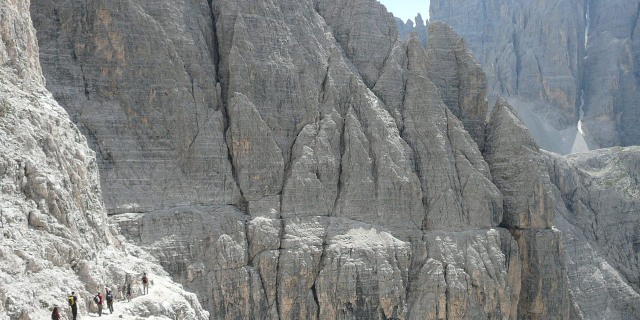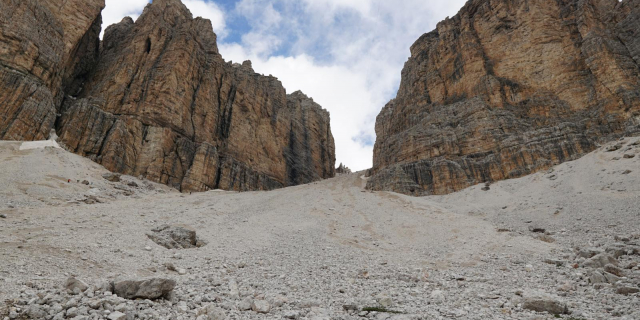Belluno
Belluno (Italian pronunciation: [belˈluːno] ; Ladin: Belum; Venetian: Belùn) is a town and province in the Veneto region of northern Italy. Located about 100 kilometres (62 miles) north of Venice, Belluno is the capital of the province of Belluno and the most important city in the Eastern Dolomites region. With its roughly 36,000 inhabitants, it is the largest populated area of Valbelluna. It is one of the 15 municipalities of the Dolomiti Bellunesi National Park.
The name of the city is derived from Celtic belo-dunum which means "shining hill."[1]
It is conjectured that the population of the area that became Belluno was largely Venetic with a strong Celtic minority. However, as the Romans expanded northward into the Alps, the Celtic either emigrated or were absorbed. The people of the area swore friendship to Rome in the 225 BC conflict with the Gauls and again during the invasion by Hannibal in the Second Punic War.
Founded perhaps around 220-200 BC the initial influence of Rome was military and commercial. Strategically located, the town protected cities to the south. Belluno also became a supplier of iron and copper. Already within the Roman sphere of influence, the town was juridically and politically incorporated into the Roman Republic by the second century BC.
Sometime between the death of Julius Caesar and the ascent of Augustus, Bellunum became a Roman municipium and its people were ascribed to the Roman tribe Papiria. The town was ruled by quattorviri juri dicendo, by quattorviri aedilicia potestate, and by a Council of Elders. Under Augustus, it became part of Regio X Venetia et Histria. Among its citizens were Caius Flavius Hostilius and his wife Domitia, whose 3rd century sarcophagus lies next to the church of San Stefano.
After the fall of the Western Roman Empire, it was ruled by the Lombards (6th century) and the Carolingians (8th century); the famous Belluno Treasure in the British Museum dates from this period. From the late 9th century it was ruled by a count-bishop and it received a castle and a line of walls. Later it was a possession of the Ghibelline family of the Ezzelino. After having long contended the nearby territory with Treviso, in the end Belluno gave itself to the Republic of Venice (1404). The city was thenceforth an important hub for the transport of lumber from the Cadore through the Piave river. It remained Venetian until 1797.[2]
After the fall of the Venetian Republic, Belluno was an Austrian possession, until it was annexed to the Kingdom of Italy in 1866.
The cathedral was severely damaged by the earthquake of 1873, which destroyed a considerable portion of the town, though the campanile stood firm.[2]
































Add new comment